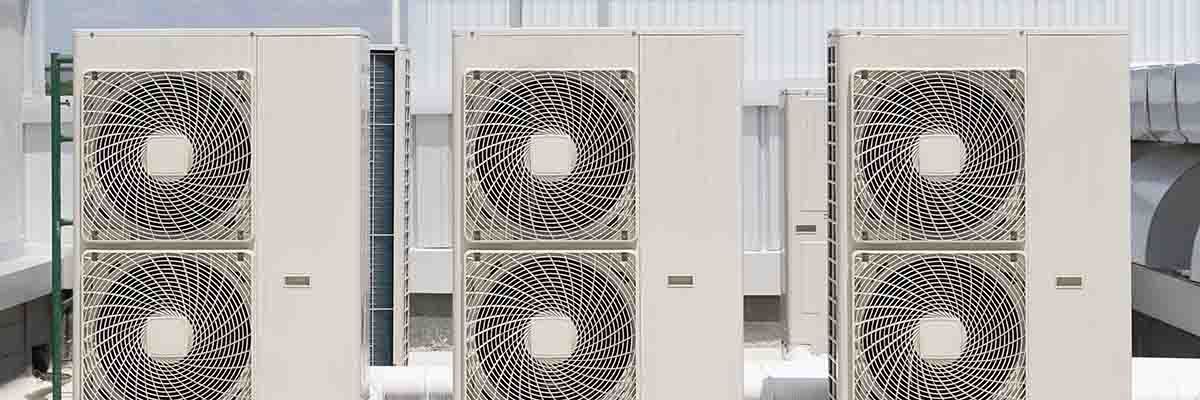How do you commission an HVAC System for a building?
Commissioning a Heating, Ventilation, and Air Conditioning (HVAC) system is an important step in the construction or management of a building. In this two-part blog series, we’ll investigate how to meet the challenge – and how NexRev can help.

We’ll do so by considering the two topics that lie at the heart of a commissioning project: first, what are the reasons you might consider such an undertaking and second, if you’ve decided to go ahead, how do you commission an HVAC system for a building? What steps do you need to take at the project’s outset to secure its success once the deployment has been completed?
Why do it?
First, an obvious but easily overlooked question: what’s the point of a commissioning process? In very simple terms, the process seeks to verify that your building gets a heating, ventilation, and air conditioning solution that’s fit for purpose! That means a system that operates efficiently, effectively, and meets your target design specifications – optimized for you and your needs.
If the system is going into a new building, it’s obvious why it’s needed and thus being commissioned (the new building needs heating, ventilation, and air conditioning). If it’s being commissioned to replace a legacy system in an existing building, several factors must be considered as part of the commissioning process. In fact, those latter considerations apply to commissioning an HVAC for a new building, too, as they address issues common to any building, old or new.
Commissioning an HVAC system? Here are several key considerations to guide you.
So, if you’re commissioning an HVAC system, what should you be thinking about at the outset of the project? What questions do you need to answer to commission the right system and deliver success? Here are some considerations that should be front of mind:
- Part of the commissioning process involves determining the optimal performance level for the HVAC that will be installed. (If you’re commissioning a replacement system, it’ll likely be because the legacy system isn’t meeting or cannot meet those requirements.) You’ll need to verify that your chosen heating and cooling equipment, controls, and sensors can be calibrated as necessary and are able to function as intended.
- If you’re targeting a replacement, the commissioning process should also involve identifying and addressing inefficiencies in the legacy system while at the same time identifying ways (particularly important today) to improve the energy efficiency of the building (or, in the case of a newly commissioned building, to make sure it’s maximally energy efficient) with the new HVAC. Doing this successfully will reduce energy consumption and lower operating costs over the system and building’s lifespan.
- Indoor air quality is a vital aspect of any building, so the commissioning process will involve checking ventilation rates to verify that the HVAC system is calibrated to maintain acceptable indoor air quality. This step will also encompass and address compliance with building codes and standards.
- In tandem with Indoor Air Quality, a broader consideration is that commissioning should consider occupant comfort. Doing so means testing and specifying the HVAC system to provide consistent and comfortable indoor conditions, including temperature and humidity control.
- Commissioning should involve identifying and resolving potential issues before they become actual problems. This means testing to isolate any possible issues or systemic deficiencies that might arise later, so that the system performs optimally right from the outset.
- Lastly, commissioning includes preparing detailed documentation, including operation and maintenance manuals.
There’s a lot to think about, and NexRev can help.
In summary, commissioning an HVAC system verifies that it meets design specifications, complies with regulations, is operationally efficient, and provides a comfortable and healthy indoor environment for occupants. Commissioning is a challenging project to manage and as we’ve seen, there’s a lot to think about.
Once you’ve commissioned the system, the work isn’t necessarily finished. Augmenting your HVAC (and other building systems like lighting, security, and energy management) with process-driven intelligent management functionality can make certain even greater value is accrued from your investment.
One example of such an approach is Freedom from NexRev, which builds on your HVAC system investment by integrating it within a future-proofed cloud-based EMS / BMS architecture that delivers multi-site building management, leveraging real-time artificial intelligence to accrue significant advantages in the areas of both performance and cost savings. Freedom can act as the “next step” in your commissioning process.
About NexRev
At NexRev, we’ve been unlocking the power of facility and energy management data with over a million connected devices across North America. Our team of experts is focused on helping you deliver more with your budgets, infrastructure, and assets to create sustainable savings in operations and energy, reducing your risk and increasing operational confidence.
To begin a discussion on how we can help you reduce energy waste please email us at